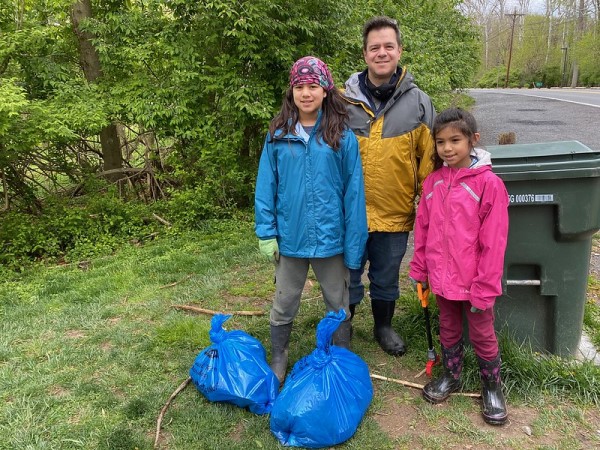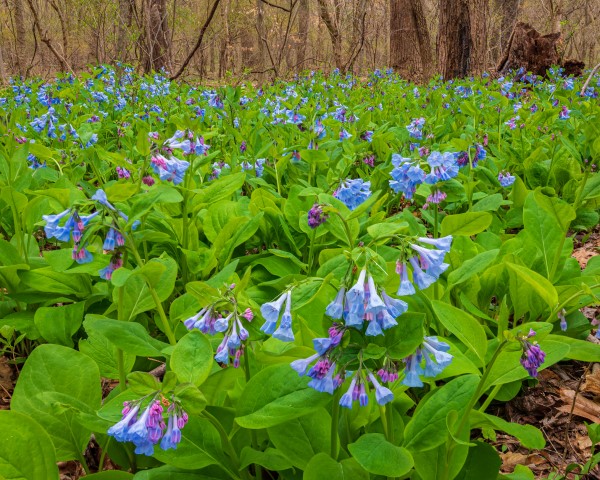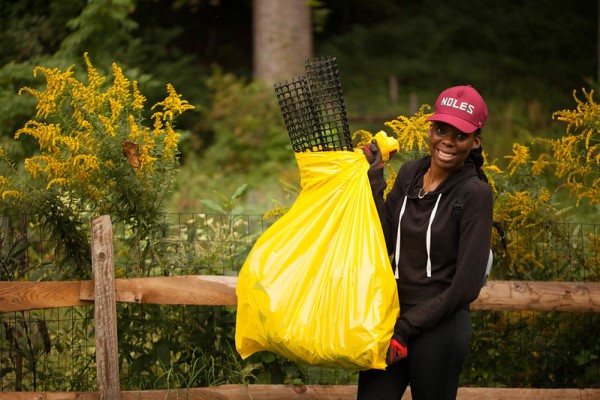Written by Jeanne Braha, Executive Director of Rock Creek Conservancy
There is something magical about running down the middle of a road in the middle of the day, hearing a creek burbling nearby, without having to worry about passing traffic.
As the last several weeks have provided any number of new things to worry about, having a little magic in our days has been a balm to the soul. There is ample data to support the notion that green spaces improve physical and mental health; Dr. Stacy Stryer, a physician with Park Rx America, shared many of these studies at an online virtual discussion hosted by Rock Creek Conservancy last month. She highlighted the ways in which living near a green space is linked to decreased levels of anxiety and depression, and increased resilience, well-being, and rejuvenation.
It’s a little harder to quantify that magic – the thrill of hearing the first wood thrush in spring, the delight of seeing your favorite wildflower on a walk, or the joy of sharing all of those things with a child experiencing them for the first time. And, of course, the feeling of being on the sections of Beach Drive closed to vehicles all week long.
Rock Creek Conservancy, through a philanthropic and stewardship partnership with the National Park Service at Rock Creek Park, protects that magic. By restoring the park and the watershed that surrounds it, the Conservancy is ensuring not just that Rock Creek can serve as the lungs for our region, but that the park will be resilient and be able to share its magic for decades to come.
The Conservancy’s model of people-powered restoration engages nearly 5,000 people each year in group events that clear invasive plants or litter from the park. These volunteers leave the park with the motivation and knowledge to serve as stewards of their portion of the watershed – protecting the park from the outside in.
Even though the Conservancy can’t host group events right now, park neighbors and friends can still enjoy and protect the park. Socially-distant stewardship is restorative to us as individuals and continues the Conservancy’s important work of removing invasive plants and litter to help restore the streams and parklands of the Rock Creek watershed.
Here are some actions individuals, families, or other household members can take at home, at work, and in our neighborhoods.
Host an individual cleanup. It’s just what it sounds like: you, a pair of gloves, a trash bag, and whatever patch of the Rock Creek watershed means the most to you. Litter many blocks from the park can get swept up by stormwater or wind and find itself floating down Rock Creek. Picking up litter in our own neighborhoods is one way to work stewardship and exercise into our daily routine.
Many of us are gardening with our time at home. Whether we’re doing this in a large yard or in planter boxes on a deck or window boxes, our choices impact Rock Creek. Non-native, invasive plant species can spread from our homes or building properties into the natural areas along Rock Creek. There are dozens of plant species that do not grow here naturally, but were brought to the area by people as ornamental plantings or for food.
For example, English ivy is a major threat to the health of the trees around Rock Creek in Montgomery County and the District. Though a common part of many of our landscapes, it spreads rapidly, can damage property, and can harm trees. The Conservancy works to remove English ivy from trees on park lands, but we need help to remove ivy throughout the watershed.
You can free a tree – take the Conservancy’s English ivy pledge and trim the ivy from the trees in your yard or your building’s grounds (get permission from the property owner if that’s not you!). Watch this short video to learn the best way to #freeatree.
Removing non-native, invasive plants from your home garden, deck, or common area is the first step to prevent them from spreading into the city’s natural spaces. If you live in an apartment building you can take action by contacting your landlord, management company, or condominium board and asking them to remove invasive plants. Learn about five of Rock Creek Park’s most common invasive plants in this blog.
Planting native species is a great way to beautify your home and provide benefit to the surrounding ecosystem. Native plants often require less maintenance and can provide a habitat for native wildlife. Even greening your balcony with native potted plants can provide food and habitat to pollinators.
Take a moment to read our blog, “Choose This, Not That,“for some inspiration on what to plant in your green space. Or work with your apartment building to encourage choosing native species for plantings.
Remember, every step each of us takes will enable us all to keep enjoying the wonderful resource of Rock Creek, so central to our health and the health of our community.

Community Spotlight: Stream Team Leader Scott Lynch. Stream Team Leaders play a key role inspiring park friends and neighbors to help steward the watershed. One such community leader is Scott Lynch, a father who has been active with the Kensington-Parkwood Green Team. Scott was inspired to get involved when he heard local kids name a large debris dam “Trash Island.” Normally he organizes cleanups along the stretch of Rock Creek upstream of Cedar Lane (near current weekend closures for socially distant recreation!). The area, which is threatened by the proposed Beltway expansion, has a popular stretch of trail, sensitive wetlands, and plenty of stormwater drainage. Thanks to Scott’s socially-distant stewardship, his neighbors reported individual cleanups totaling 62 volunteer hours, with 18 bags of trash removed.
To learn more about the work of Rock Creek Conservancy and its mission to restore Rock Creek and its parklands as a natural oasis for all people to appreciate and protect, you can visit rockcreekconservancy.org and sign up here for regular updates on ways to get involved.



